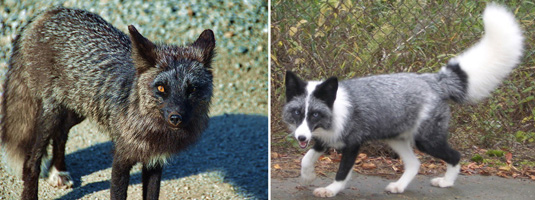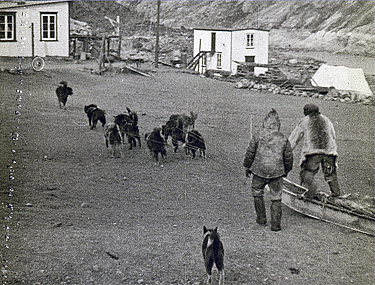Editorial: A dog for all seasons
The Fan Hitch Web and Journal Updates
Fan Mail
The Doggy Men Goes Digital
In the News
Tumivut: Healthy Diet for Dogs
Qimmivut (Our Dogs)
Media Review: Nunavut Quest: Race Across Baffin
Nunavutquest.com Update
The Chinook Project Returns to Labrador
Sirmilik
IMHO: Save the... (fill in the blank)
Navigating This Site
Index of articles by subject
Index of back issues by volume number
Search The Fan Hitch
Articles to download and print
Ordering Ken MacRury's Thesis
Our comprehensive list of resources
Defining the Inuit Dog
Talk to The Fan Hitch
The Fan Hitch home page
ISDI home page
Editor's/Publisher's Statement
Editor: Sue Hamilton
Webmaster: Mark Hamilton
The Fan Hitch, Journal of
the Inuit Sled Dog, is published four times
a year. It is available at no cost online
at: https://thefanhitch.org.
The Fan Hitch welcomes your letters, stories, comments and suggestions. The editorial staff reserves the right to edit submissions used for publication.
Contents of The Fan Hitch are protected by international copyright laws. No photo, drawing or text may be reproduced in any form without written consent. Webmasters please note: written consent is necessary before linking this site to yours! Please forward requests to Sue Hamilton, 55 Town Line Rd., Harwinton, Connecticut 06791, USA or mail@thefanhitch.org.
This site is dedicated to the Inuit Dog as well as related Inuit culture and traditions. It is also home to The Fan Hitch, Journal of the Inuit Sled Dog.
The Fan Hitch welcomes your letters, stories, comments and suggestions. The editorial staff reserves the right to edit submissions used for publication.
Contents of The Fan Hitch are protected by international copyright laws. No photo, drawing or text may be reproduced in any form without written consent. Webmasters please note: written consent is necessary before linking this site to yours! Please forward requests to Sue Hamilton, 55 Town Line Rd., Harwinton, Connecticut 06791, USA or mail@thefanhitch.org.
This site is dedicated to the Inuit Dog as well as related Inuit culture and traditions. It is also home to The Fan Hitch, Journal of the Inuit Sled Dog.

|
A wild
silver fox near Dawson City, Yukon Territory,
Canada. Recent DNA research identified eastern
Canada as the source of Belyaev’s original
foxes!
Photo: Dave Bezaire & Susi Havens-Bezaire |
A
behaviorally manipulated (bred) silver fox from
the Belyaev project bearing the star phenotype. Courtesy of Anonymous |
Landmark Russian Fur Fox Research in Jeopardy?
In a March 13, 2012 article, "Domesticated foxes in Siberia: An experiment in peril," (Slate Magazine), the author, who describes herself as a writer and adventurer and who teaches environmental journalism and science writing, tells of her visit to Belyaev's fox farm in Siberia where Dr. Lyudmilla Trut assumed the position of head researcher at the Institute of Cytology and Genetics in Novosibirsk, Russia upon her colleague's death in 1985. The article's author mentions deteriorating conditions and a desperate need for an infusion of funding for the work to continue. She does not paint a rosy future. However, in speaking last month to a molecular geneticist who has co-authored several research papers and book chapters with Dr. Trut, the future appears to be less ominous.
"Thank you for your letter and the interest in the fox project. The fact that there are genetically tame foxes and that it is in our hands to see if they can be good companions and may be good service animals (say for rescue work, finding drugs, etc.) is very exciting to me and many other people. This article [in Slate Magazine] misinterpreted some facts. Securing funds for the fox colony was a challenge for quite some time but the situation is changing in a better direction. The economical situation in Russia is much better then it was ten years ago and it has a positive impact on the support of the fox colony as well. The farm renovation is also planned. It is also interesting that the number of people who have tame foxes as pets is slightly growing. Dr. Trut's group tries to keep in touch with owners of these foxes and collect information about their behavior outside the farm. It may help to learn more about behavior of tame foxes in "the real world" and hopefully lead to some other forms of maintenance of these foxes as well."
With this more optimistic view, hopefully the important research program begun nearly six decades ago by Dr. Belyaev will improve and continue under the supervision of Dr. Trut and her colleagues.
*
* *

“Commetick, an Eskimo sledge driven with the dogs in fan-like formation,”
Lake Harbour (Kimmirut), on Baffin Island; 1919.
Credit: Hudson's Bay Company Archives / Archives of Manitoba,
courtesy of Five Door Films
The Return of the Far Fur Country
In 2010 Five Door Films and the Hudson's Bay Company Archives (an entity of the Provincial Archives of Manitoba, no longer connected to the HBC stores), began a collaboration with the cooperation of the British Film Institute as well as historians, writers and archivists to recreate the original film, now recognized as a precious "time capsule". As of this writing the project is still ongoing, with a likely release in 2013. However, screenings of some completed segments began touring Canada in 2011. Kevin Nikkel, writer/producer/director for Five Door Films says, "Besides the local screenings in northern communities we were able to gather oral histories from local elders inspired by what they saw in the archival footage. These stories will eventually find there way into our documentary telling the story of the project." Once recreation of The Romance of the Far Fur Country has been completed, Nikkel says the film tour will take it "… not only to cities like Montreal, Winnipeg and Victoria—places that feature in the HBC film—it's also going back to some of the most remote locations in Canada. The tour includes Northern Alberta, Nunavut, Alert Bay off Vancouver Island, and Northern Ontario."
While the filming took place nearly a hundred years ago in more than just Arctic Canada, Nikkel says, "There are about 30 minutes of Nunavut footage. There is at least one shot of Inuit with their dogs in a fan hitch formation. The film crew travelled through the arctic in July-August, so the shot is in summer... it seems it is staged to show their use of the dogs pulling a sled as a demonstration, but how frequent would their travel have been (over rocks) in the summer with the dogs pulling sleds?"
As there are precious few moving pictures of Inuit and their dogs of this era, The Romance of the Far Fur Country is most worthy of remaining on our radar while awaiting its 2013 release for general viewing. Learn more about the project and keep track of its progress and where the teaser footage is being shown at The Return of the Far Fur Country website.